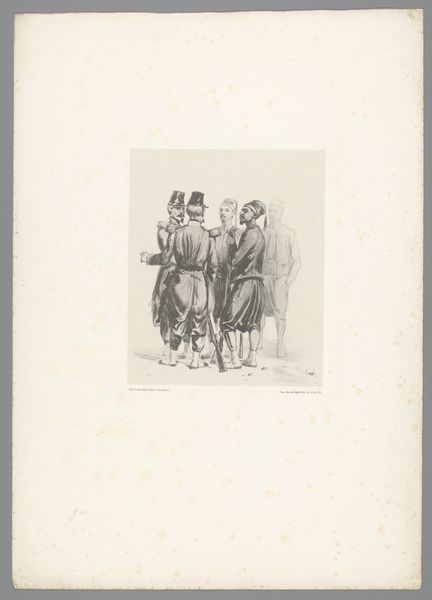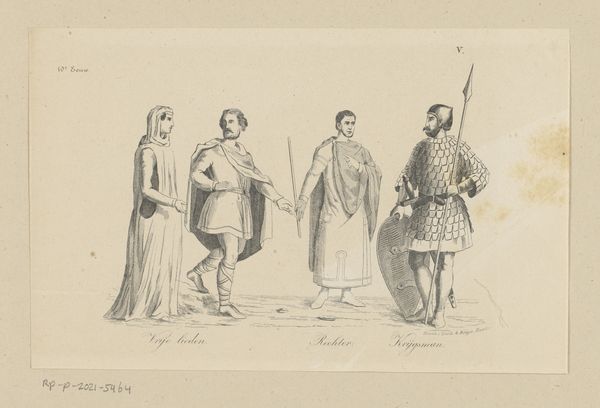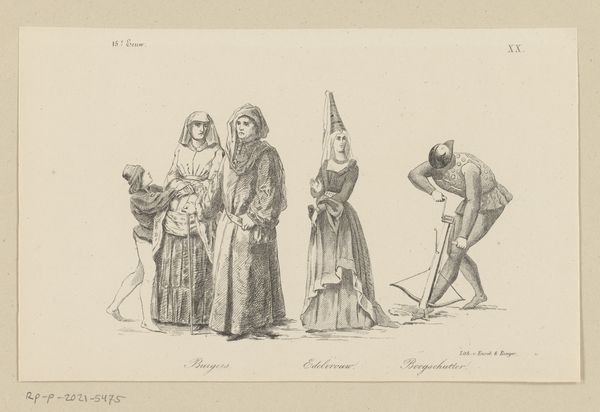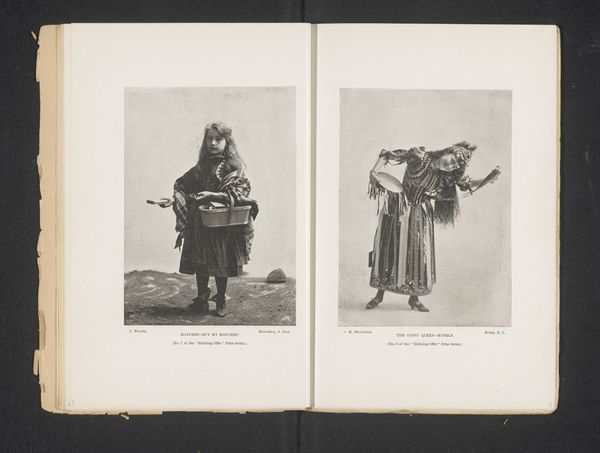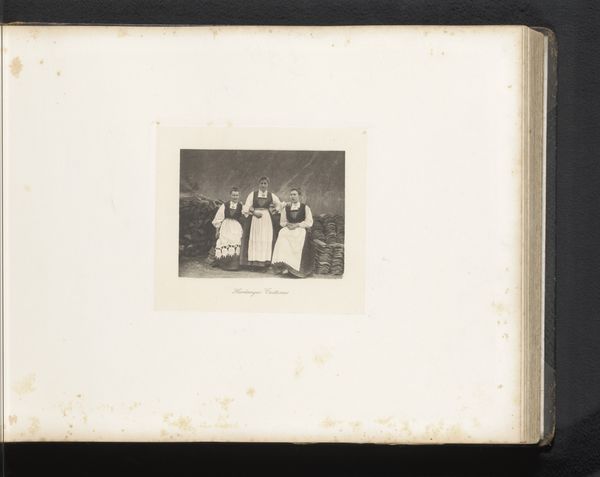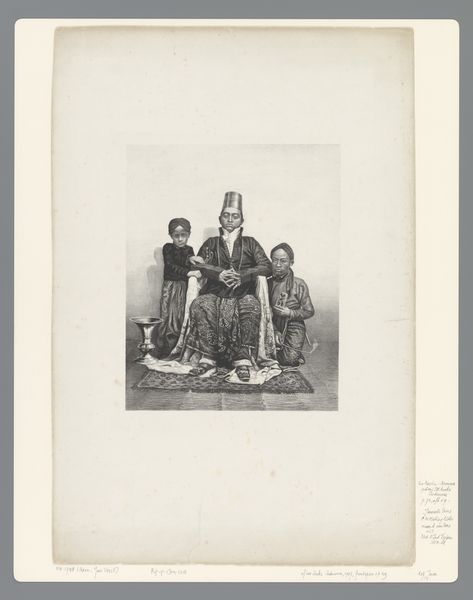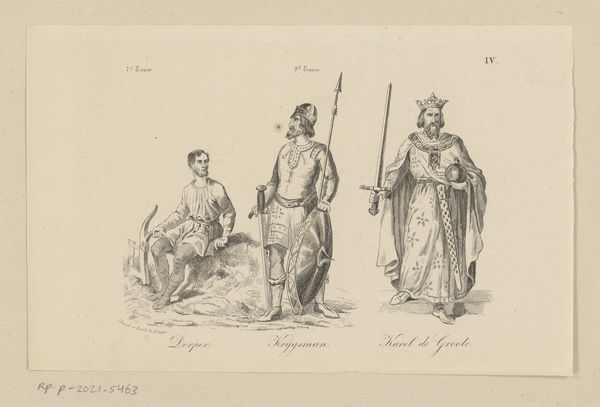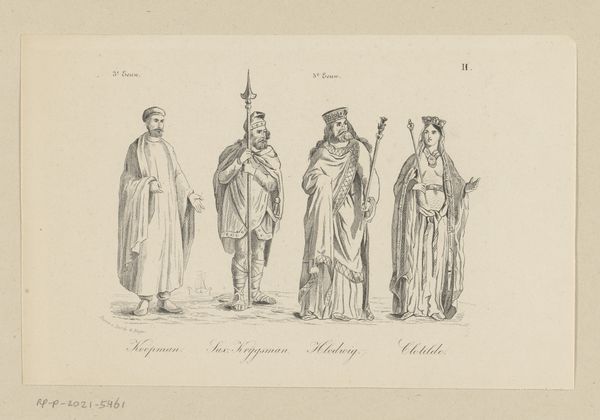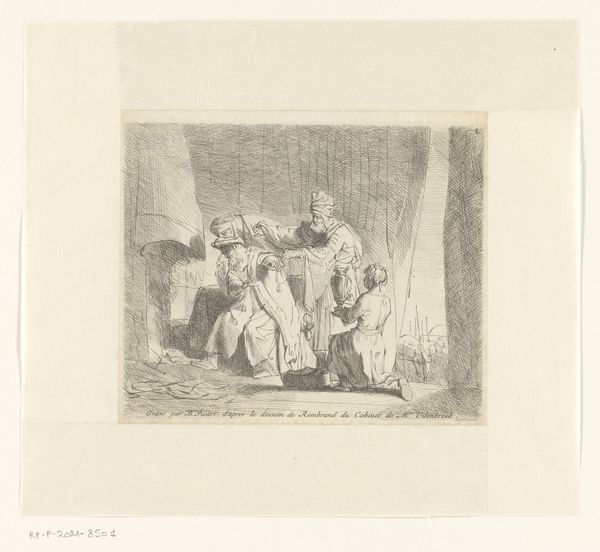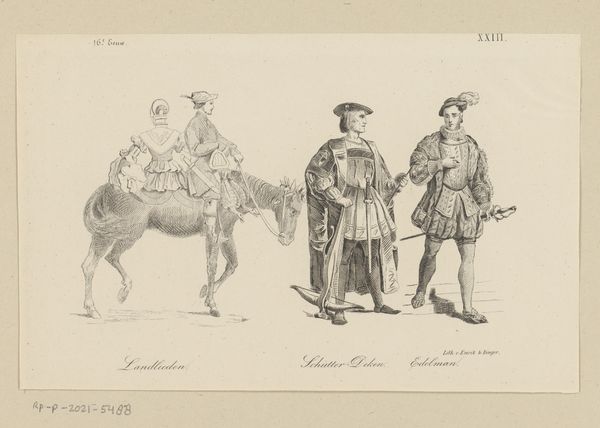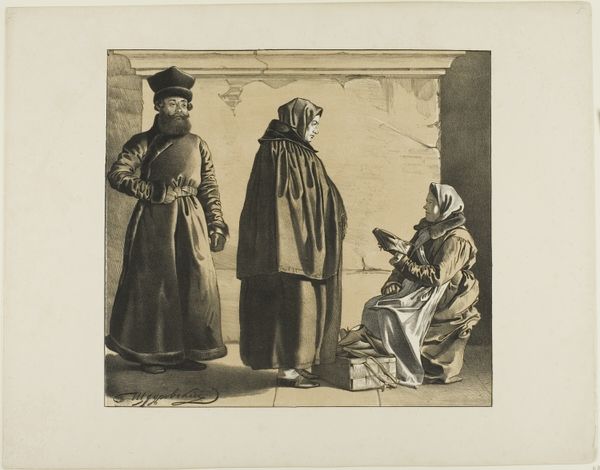
print, etching, engraving
# print
#
etching
#
figuration
#
watercolour illustration
#
history-painting
#
academic-art
#
engraving
#
watercolor
Dimensions: height 291 mm, width 372 mm
Copyright: Rijks Museum: Open Domain
Editor: This print, "Drie Ridders," made by Charles Rochussen between 1858 and 1864 using etching and engraving, depicts three knights. The detail in their robes and faces is quite striking, but I wonder about its deeper context. What story do you think this piece tells? Curator: It speaks volumes about the 19th-century’s fascination with the medieval period, often viewed through a romantic and nationalistic lens. Rochussen likely intended this print for a middle-class audience interested in historical narratives. Think about the rise of historical societies and museums during this time; images like this helped construct a visual understanding of the past. Editor: So, it's not necessarily about historical accuracy, but more about creating a specific image of the past for a contemporary audience? Curator: Precisely. The artist is constructing an idea of chivalry and perhaps even hinting at Dutch national identity by invoking these historical figures. Notice the emphasis on their regalia, the crosses. How do these details shape your understanding of the work's public role at that time? Editor: I see, it's a representation loaded with cultural and political meaning. It makes me question what aspects of the past were being celebrated and what were being conveniently left out. Curator: Exactly! And that questioning is crucial. By analyzing what’s included and excluded, we gain insight into the values and anxieties of Rochussen’s society. Now, thinking about today, what narratives are omitted in modern media about comparable historical periods? Editor: Wow, I hadn't considered the implications of omission before! That’s really made me rethink how history is presented, then and now. Curator: Indeed, art serves as a window into not just the past, but also the values of its creators and the societal contexts in which they operate. The stories art does – and does not – tell are often equally revealing.
Comments
No comments
Be the first to comment and join the conversation on the ultimate creative platform.

